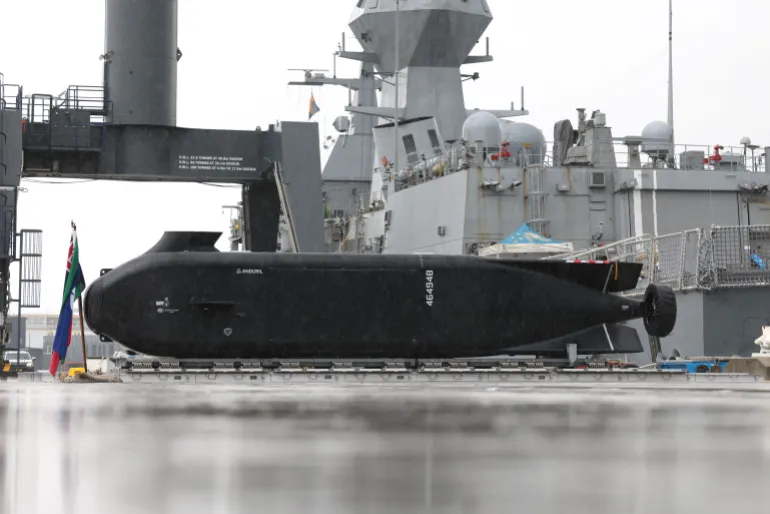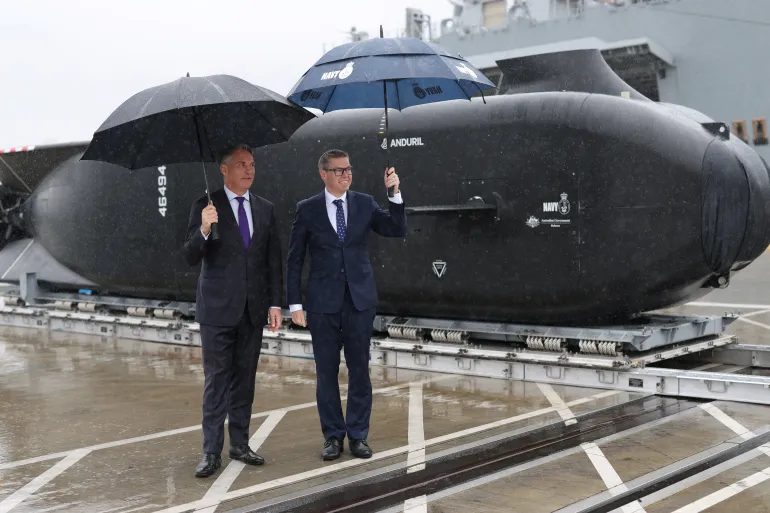Ghost Shark attack drones are set to become Australia’s most ambitious naval investment in decades, with $1.1 billion allocated to develop and deploy these extra-large, autonomous undersea vehicles (XL-AUVs). The program aims to transform Australia’s maritime defense strategy, allowing the Royal Australian Navy to strengthen surveillance, reconnaissance, and offensive capabilities in a time of rising regional tensions.
Ghost Shark Attack Drones: A New Era for Naval Warfare
The Ghost Shark attack drones are designed to complement Australia’s existing naval surface fleet and its future fleet of nuclear-powered submarines being developed under the AUKUS agreement with the United States and the United Kingdom.
Australian Minister for Defence Richard Marles called the project a game-changer for the nation’s security:
“This is a profoundly important capability for the Royal Australian Navy. Australia faces the most complex, in some ways, the most threatening, strategic landscape that we have had since the end of the Second World War.”
These drones will have very long range and stealth capabilities, allowing them to travel undetected and perform intelligence, surveillance, reconnaissance (ISR), and even strike missions.
Why Australia is Investing $1.1 Billion in Ghost Shark Drones
Australia’s massive coastline — over 34,000 km — and its strategic location in the Indo-Pacific mean that maritime security is critical. The country is also responsible for monitoring nearly 3 million square kilometers of northern ocean, a vast area that poses surveillance challenges.
Richard Marles emphasized that Ghost Shark attack drones will help Australia build “a more capable and more lethal navy” that can deter potential threats while maintaining freedom of navigation in contested waters, including the South China Sea.
Partnership with Anduril and Local Production
The government signed a five-year contract with Anduril Australia, the defense tech company responsible for building and maintaining the Ghost Shark fleet. The project will create local manufacturing opportunities and may open doors for future exports to allies.
Pat Conroy, Minister for Defence Industry, highlighted the domestic benefits:
“Dozens of Ghost Sharks will be built here in Australia, creating local jobs and strengthening our defense industry. We are also exploring opportunities to export this technology to trusted partners.”
The first Ghost Shark drones are expected to enter service in early 2026, significantly bolstering Australia’s naval readiness.
Ghost Shark’s Advanced Capabilities
Unlike smaller unmanned underwater vehicles, the Ghost Shark XL-AUVs are large enough to carry sophisticated payloads, including sensors, sonar equipment, and potentially weapons. Their autonomous navigation system allows them to travel long distances without human intervention, making them ideal for covert missions.
The Defence Science and Technology Group (DSTG) has been instrumental in integrating cutting-edge AI into the Ghost Shark system. The XL-AUVs can operate for extended periods, conduct mapping missions, monitor submarine activity, and deliver strike capabilities if required.
Strategic Significance: Countering China in the Indo-Pacific
Australia’s decision to invest heavily in Ghost Shark attack drones comes amid increasing Chinese military activity in the South China Sea and broader Indo-Pacific. Beijing has been expanding its navy, building artificial islands, and deploying submarines across the region — actions that have raised concerns among Australia and its allies.
Military analysts say the Ghost Shark fleet will serve as a force multiplier, enabling Australia to maintain maritime security without the cost and manpower of additional crewed submarines.
Connection to AUKUS and Nuclear Submarine Program
Australia is also building nuclear-powered submarines under the AUKUS pact with the UK and US, a process expected to take decades. The Ghost Shark drones will fill an important gap until those submarines are delivered.
However, the AUKUS program has faced scrutiny, particularly from critics in the US who question why America is committing its nuclear submarine technology abroad while its own fleet is stretched thin. President Donald Trump’s administration has placed AUKUS under review to ensure it aligns with the “America First” strategy, but Australian officials remain confident that the deal will proceed.

Calls for Balance and Transparency
While the Ghost Shark program has been widely welcomed by defense experts, some critics argue that such a major investment should be accompanied by transparency about potential risks and ethical implications of deploying autonomous attack drones.
Military researcher Sarah Kendall told local media:
“Autonomous systems raise questions about accountability in armed conflict. Australia must ensure that these drones comply with international humanitarian law and that there is always human oversight for any offensive action.”
Economic and Industrial Impact
Beyond defense, the Ghost Shark program is expected to stimulate Australia’s high-tech manufacturing sector, create skilled jobs, and boost research in robotics, AI, and maritime engineering. Industry experts say this initiative could place Australia among global leaders in autonomous naval technology.
Pat Conroy stated:
“This project is not just about defense. It’s about building sovereign capability and making Australia a key player in the global market for autonomous systems.”
Looking Ahead: Deployment and Future Development
The rollout of Ghost Shark drones will be gradual, with testing and integration into the Royal Australian Navy ongoing through 2025. Defence officials have not disclosed the exact number of drones to be built, citing national security concerns, but “dozens” are expected to be operational by the end of the decade.
There is also potential for future upgrades, including advanced sonar, improved AI decision-making, and integration with other AUKUS-related technologies.
Source: Al Jazeera


